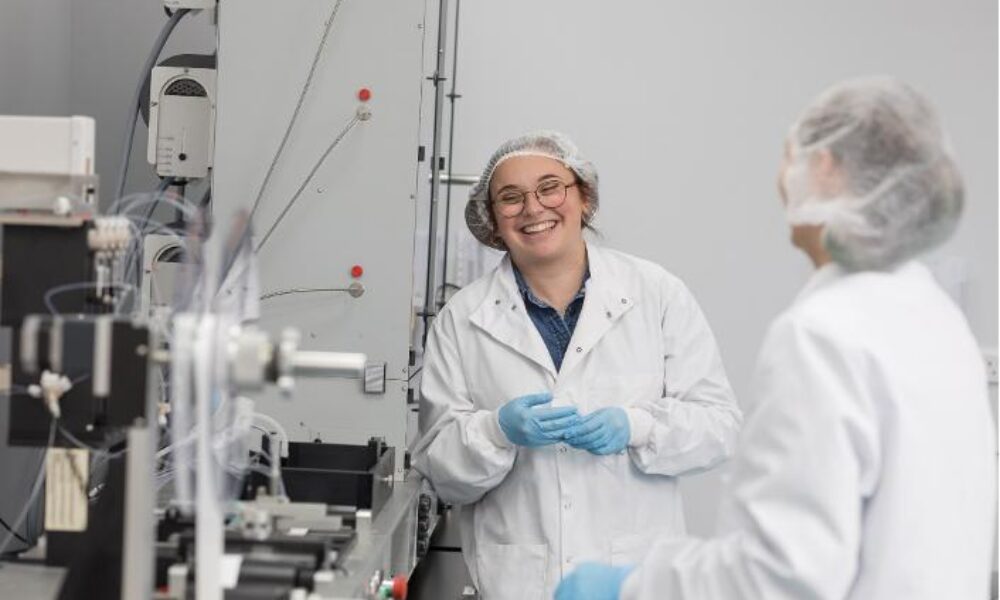Proud to be Part of The Future of Women in STEM Manufacturing

My World of Manufacturing
Times Are Very Different
Which Came First, The Chicken or The Egg?
Gender Equality at Abingdon Health
Key Take-Away
The working environment is a far cry from the times of the Suffragette’s Movement and the traditional male-dominated ‘blue collar’ industries of the 1980s and 1990s. Women are and have been for some time, trailblazing a different path that is inspiring generations of young girls and women.
Therefore, Abingdon Health’s Head of HR, Natalie Thrush, looks back on her career within the manufacturing sector and how it is no longer just a ‘man’s world’.
My World of Manufacturing
The shape of women in Manufacturing has changed dramatically over the last 30 years. My time in the industry has spanned 3 decades. Wow, how times have changed in those 3 decades!
In the past, manufacturing was a very male-dominant environment especially at leadership level; the glass ceiling was firmly in place. It was mostly heavily unionised environments, where we worked to the clock (a buzzer sounded to tell us when to start and finish!). Women mostly worked in the office in a very divided white- and blue-collar environment. On occasions women experienced sexist and misogynistic behaviour toward them. Something, I’d like to add is very much a thing of the past in my experience.
Times Are Very Different
Throughout the decades many women have bravely spoken up and changed the path for many girls and women.1 Thanks to the ‘trailblazers’ and the ‘change makers’ on the shop floor, women are much more empowered in all walks of life. There is a much higher percentage of women in manufacturing at all levels than ever before.
Manufacturing environments, like that of Abingdon Health, are more automated now, we are much more analytical, and we plan more than ever. Systems have helped businesses go from strength to strength. Manufacturing environments are now much more thoughtful and strategic in comparison to the ‘bish-bash-bosh’ of the past.
Which Came First, The Chicken or The Egg?
Has the increase of female presence in manufacturing driven the positive changes that we’ve seen across the industry OR has manufacturing progressively changed with the times and in turn this has attracted more females?
What I do believe is that women working in manufacturing will only go from strength to strength. The introduction of the apprenticeship levy and relaunch of Apprenticeship schemes in general has driven more females into manufacturing at shop floor levels. In the last 3 years more females have joined engineering-based apprenticeship schemes and we are seeing more female leaders within C-Suite roles than ever before.
Gender Equality at Abingdon Health
I am pleased to say that Abingdon Health very much supports women in manufacturing. We are seeing more women apply for manufacturing roles, and the calibre is also very high. Meaning successful female candidates have been appointed very much on merit.
So how have we developed our Gender Equality at Abingdon Health. We are humble ???? but can boast heavily:
- 54% of our workforce are women.
- Our GPG (Gender Pay Gap) is 2.1%. (Manufacturing figures published 2021 @ 13%)
- 1 of our 3 C-Suite members is female.
- 56% of our leaders are women.
- 75% of our Manufacturing leaders are women
- 52% of our Manufacturing team are women
Key Take-Away
The manufacturing working environment has changed for the better. No longer are women turning up to work on the backfoot. Women are leaders, directors, and business owners in what was once perceived to be a male world. I personally think this is a change for the good. Equality and Diversity is there to be embraced for the good of individuals, businesses, and communities.
At Abingdon Health, I am proud to work for a company where as a female, a leader and a parent I can be myself, and where everyone, irrespective of their gender is given the same chances. People at Abingdon Health working across all departments are here on merit and have the same opportunities to progress their career.
I’d love to hear more stories about how other Manufacturers are shaping their business to drive more women into their environment. What else can we do to encourage a healthy gender balance.
Reference
